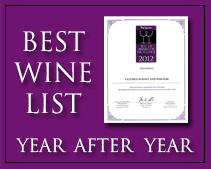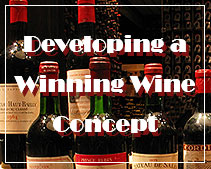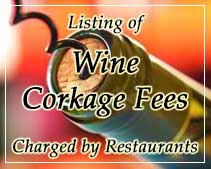Indisputably, one of modern France’s greatest treasures is its rich cuisine
January 20, 2011
Indisputably, one of modern France’s greatest treasures is its rich cuisine. The French have an ongoing love affair with food, and their reverence for time spent eating is evident in any culinary establishment nationwide. It is also manifested in the traditional family gatherings around the home dinner table, particularly the Sunday mid-day feast which is prepared lovingly over many hours and consumed leisurely through a bevy of appetizers and main courses, usually accompanied by a number of wines and often lively discussion which tends to center on political topics.
What is perhaps less widely recognized is that France’s reputation for fine food is not so much based on long-held traditions but on constant change. In fact, the general expectation of good eating is a relatively new experience for the French. At the time the Bastille was stormed in 1789, at least 80% of the French population were subsistence farmers, with bread and cereals as the basis of their diet, essentially unchanged since the time of the ancient Gauls nearly two millenia before. In the mid-nineteenth century, following the demise of the aristocracy, food was a conspicuous symbol of social position, swiftly adopted by a new ruling class of bourgeoisie, who recreated the sumptuous meals of the very aristocracy they had once criticized. At the same time, two-thirds of Parisians were either starving or ill-fed, five times more likely to be nourished from vegetable proteins than from any meats or dairy products. The golden age of haute cuisine benefited only those at the very top of the social ladder.
It took a world war at the beginning of the twentieth century to halt the gross inequality of wealth at the table, and to bring about a more even distribution of the nation’s produce. The advent of improved transportation, especially by train, brought culinary revolution to the regions, and slowly the spreading affluence could put a chicken on every peasant’s table. Eventually, tourism fanned the flames of change in France’s commercial kitchens, as chefs were obliged to create dishes appealing to an ever-widening audience of British, Japanese, Middle Easterners, and Americans, as well as French travelers hungering for new experiences. In some instances the reasons for change in regional products were a pragmatic reaction to a decline in other industries (such a silk) or to the economic disaster brought about by the Phylloxera pest, which wiped out most of France’s grape vines at the turn of the century.
________________________________________
The “French Paradox”
It is well-known that the stereotypical French meal is heavy in saturated fats; heavy creams and butter are a staple in many dishes. Despite this fact, the French populace suffers from lower incidences of cardiac disease than many other western nations, including the U.S. Much research and medical opinion seems to credit their consumption of red wines with an overall reduction in cholesterol levels (see “The French Paradox”). Whatever creedence one might place in this theory, it is a given that all French food is best accompanied by wine to be enjoyed to its fullest.
________________________________________
Cheese Tips & Trivia
• The golden rule for cutting cheese: each person should get his or her share of the center of the cheese…and of the rind.
• Since it is the least cold, the vegetable drawer in your refrigerator is the best place to store cheese. Keep cheese in its original wrapping or cover it with aluminum foil or plastic wrap.
• The French eat more cheese than any other nation in the world – an amazing total of 20.4 kg (45 lbs.) per person per year. 400 different kinds of cheese are made in France.
• Some goats’ milk cheeses are sprinkled with charcoal ash. This gives them an ash-grey color and is intended to absorb surface moisture, thus helping to preserve them.
Source: http://www.discoverfrance.net/France/Food/DF_cuisine.shtml
Leading Philippines Wine Supplier Yats Wine Cellars based in Clark Philippines with outlets in Angeles City, Subic Freeport and Manila Philippines has been not only a wine shop for fine wines covering all major wine regions but also a source of reliable and useful information about wine, wine appreciation, wine accessories, wine and health, food and wine pairing and all other matters relating to wine and its appreciation. This Philippines Clark Freeport based Wine Supplier and Wine Shop frequently holds public wine tasting events in Pampana Clark Freeport Zone, Angeles City, Subic Bay area, Makati, Fort Bonifacio and other areas in Philippines capital city Manila. Private Wine events such as private wine tasting and private wine dinners are also designed and organized for private clientele for their wine loving guests.
This wine shop in Angeles Clark Philippines is also renowned for a very unique product called Vintage Beer which many characterize as “Champagne beer” because it comes in a bottle with a Champagne stopper and metal restrainer. Vintage beers are top-of-the-line luxury beers bottle-conditioned for a slow fermentation to take place inside the bottle, a process that is very similar to Champagne which is designed to not only create the bubbles but also for an amazing complexity and depth of flavors.
For fans of Port and Sauternes, this wine shop in Clark Pampanga has a large selection of vintage port, Sauternes and Barsac as well as Eiswein/Icewine from Austria and Germany. Likewise, there is a good selection of Vintage Champagne at the wine shoppers’ disposal in the cellars of this wine shop in Clark Pampanga.
http://www.ClarkWineCenter.com
Getting to this wine shop in Pampanga Angeles City Clark Freeport Zone Philippines from Manila
Getting to the Clark Wine Center wine shop from Manila is quite simple: after entering Clark Freeport from Dau and Angeles City, proceed straight along the main highway M A Roxas. Clark Wine Center is the stand-along white building on the right, at the corner A Bonifacio Ave. From the Clark International Airport DMIA, ask the taxi to drive towards the entrance of Clark going to Angeles City. From Mimosa, just proceed towards the exit of Clark and this wine shop is on the opposite side of the main road M A Roxas.
For inquires and reservations, contact us here
Clark Wine Center
Bldg 6460 Clark Observatory Building
Manuel A. Roxas Highway corner A Bonifacio Ave,
Angeles Clark Freeport Zone, Pampanga 2023
0922-870-5173 0917-826-8790 (ask for Ana Fe)
Wine@Yats-International.com
YATS Wine Cellars
Manila Sales Office
3003C East Tower, Phil Stock Exchange Center,
Exchange Rd Ortigas Metro Manila, Philippines 1605
(632) 637-5019 0917-520-4393 ask for Rea or Chay
Best place to buy wine in Clark Pampanga outside Manila near Subic and Angeles City Philippines is Clark Wine Center. Visitors buy wine in Manila and Pampanga should not miss stopping at this wine shop for a few bottles of fine vintage wines to bring home.
You can skip to the end and leave a response. Pinging is currently not allowed.







